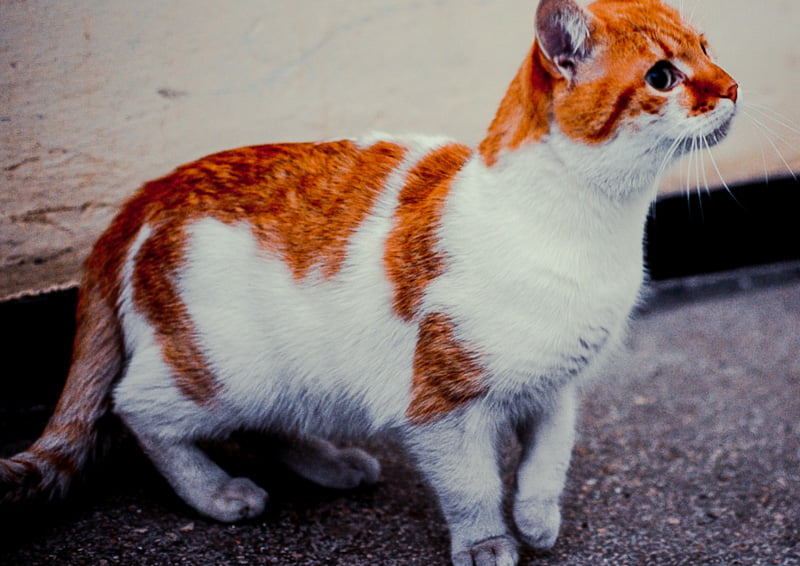In the cat world ‘harlequin’ is a word that is occasionally (but rarely today) used to describe the bi-colour coat with more white fur than non-white fur. Bicoloured cats are white plus distinct areas of colour. For the harlequin, the coat should be 50-75 per cent white and 50-25 per cent coloured. This coat type is caused by the piebald (white spotting) gene which removes pigmentation from the hair strands which are ‘white’. They are transparent.
The white areas tend to favour the frontal parts of the cat and the undersides.
The word ‘piebald’ is a merging of the second part of the word ‘magpie’ and the word ‘bald’ which describes a lack of pigment in the while areas of the coat. In this instance ‘bald’ means without colour rather than without hair.
The magpie has a bicolour coloration and in the past piebald cats have sometimes been referred to as ‘magpie cats’. The term ‘bicolour’ or ‘bi-colour’ (American: bi-color) found favour over harlequin.
RELATED: Why do magpies harass cats and do they retaliate?
In 1957 a man by the name of Dechambre wrote this about bicolour cats: “By a pied cat is meant any cat with large patches of colour on a white background”. At that time ‘pied’ was used rather than piebald.
In 1970 ‘white spotting’ was used as an alternative to piebald.
In general usage the word ‘harlequin’ means ‘in varied colours; variegated.’ You can see how the word was adopted by the cat fancy to mean a predominantly white bicolour cat.
Here is an example:

Below are some articles on bicolour cat coats:

